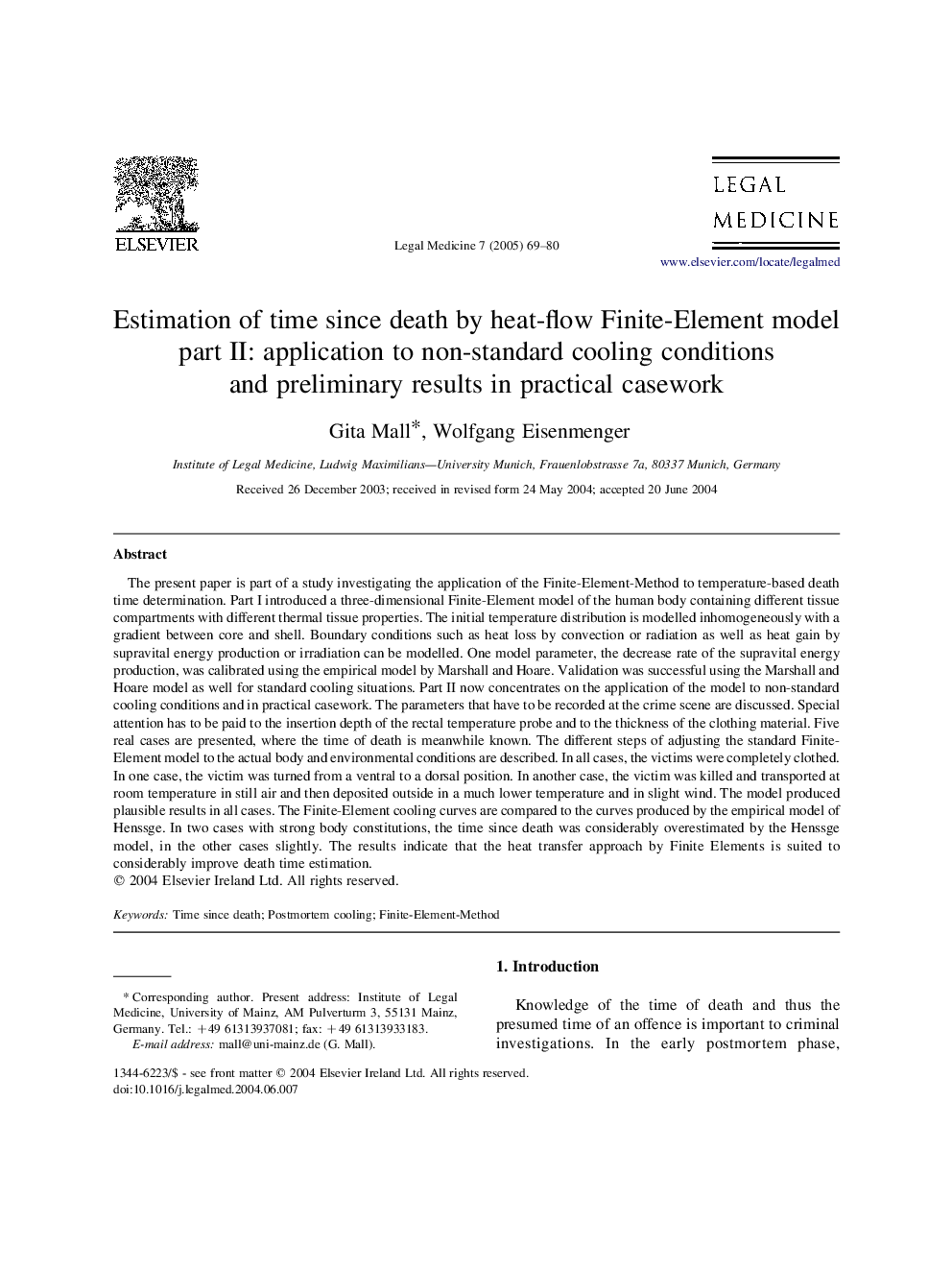| کد مقاله | کد نشریه | سال انتشار | مقاله انگلیسی | نسخه تمام متن |
|---|---|---|---|---|
| 10254566 | 161427 | 2005 | 12 صفحه PDF | دانلود رایگان |
عنوان انگلیسی مقاله ISI
Estimation of time since death by heat-flow Finite-Element model part II: application to non-standard cooling conditions and preliminary results in practical casework
دانلود مقاله + سفارش ترجمه
دانلود مقاله ISI انگلیسی
رایگان برای ایرانیان
موضوعات مرتبط
مهندسی و علوم پایه
شیمی
شیمی آنالیزی یا شیمی تجزیه
پیش نمایش صفحه اول مقاله

چکیده انگلیسی
The present paper is part of a study investigating the application of the Finite-Element-Method to temperature-based death time determination. Part I introduced a three-dimensional Finite-Element model of the human body containing different tissue compartments with different thermal tissue properties. The initial temperature distribution is modelled inhomogeneously with a gradient between core and shell. Boundary conditions such as heat loss by convection or radiation as well as heat gain by supravital energy production or irradiation can be modelled. One model parameter, the decrease rate of the supravital energy production, was calibrated using the empirical model by Marshall and Hoare. Validation was successful using the Marshall and Hoare model as well for standard cooling situations. Part II now concentrates on the application of the model to non-standard cooling conditions and in practical casework. The parameters that have to be recorded at the crime scene are discussed. Special attention has to be paid to the insertion depth of the rectal temperature probe and to the thickness of the clothing material. Five real cases are presented, where the time of death is meanwhile known. The different steps of adjusting the standard Finite-Element model to the actual body and environmental conditions are described. In all cases, the victims were completely clothed. In one case, the victim was turned from a ventral to a dorsal position. In another case, the victim was killed and transported at room temperature in still air and then deposited outside in a much lower temperature and in slight wind. The model produced plausible results in all cases. The Finite-Element cooling curves are compared to the curves produced by the empirical model of Henssge. In two cases with strong body constitutions, the time since death was considerably overestimated by the Henssge model, in the other cases slightly. The results indicate that the heat transfer approach by Finite Elements is suited to considerably improve death time estimation.
ناشر
Database: Elsevier - ScienceDirect (ساینس دایرکت)
Journal: Legal Medicine - Volume 7, Issue 2, March 2005, Pages 69-80
Journal: Legal Medicine - Volume 7, Issue 2, March 2005, Pages 69-80
نویسندگان
Gita Mall, Wolfgang Eisenmenger,